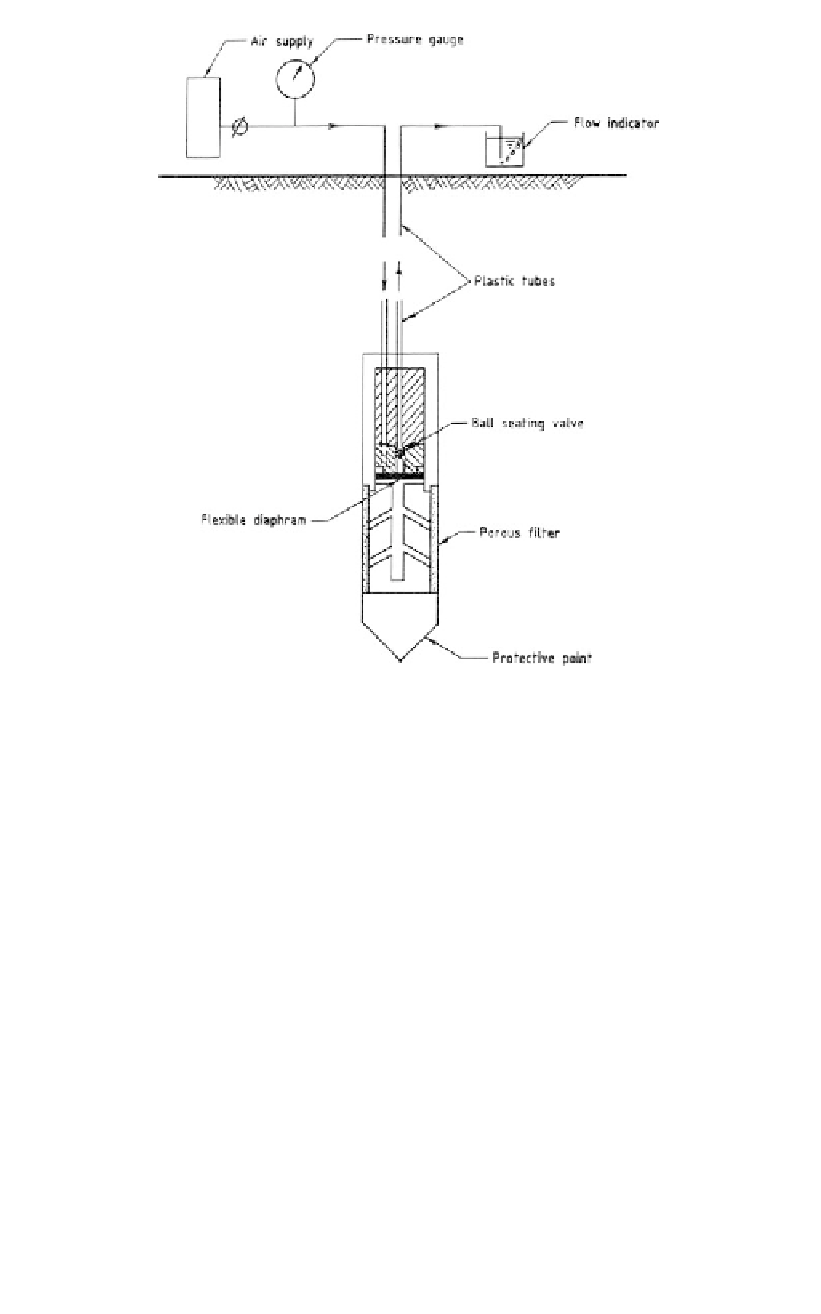Environmental Engineering Reference
In-Depth Information
Figure 20.19.
Pneumatic piezometer (from ANCOLD, 1983).
The piezometers are fitted with high- or low-air-entry tips. Sherard (1981) discusses at
some length the relative merits of using high- or low-air-entry tips. He concludes that if
low-air-entry tips are used in unsaturated soil, the water in the tip will be sucked out by
capillary action and the piezometer will measure pore air pressure u
a
. However, if high-
air-entry tips are used, the response time during reading may be affected, and the piezome-
ter may read an erroneously high pressure. This is because of the small volume of water
displaced by the action of the diaphragm. Sherard suggests using tips with an air-entry
value just above the soil suction pressure. This is not a problem when the piezometers are
being used in saturated soils and, since it is easier to de-air low-air-entry tips, these are
often used. Where high pore pressures are to be measured the pore air and pore water
pressures are similar so the choice of tip is not critical.
The tubes should be of the same construction as for hydraulic piezometers, i.e. Nylon 11
sheathed in polyethylene, as this gives strong, stiff tubes, impervious to ingress of water and
leakage of air. If water does enter the tubes, flushing with dry nitrogen is necessary. The use
of lighter tubing can result in problems with crushing and kinking and the savings in cost
may not be warranted.
The pressure is usually read by a portable readout which is connected to the tubes with
quick-connect couplings. Either a Bourdon or digital type gauge is used. The latter can be
adapted to auto-data logging with the terminal permanently installed and programmed to
interrogate each gauge in turn at predetermined intervals.
The terminal pressure gauge can be located at any elevation relative to the piezometer
and tubes can be laid in any configuration. In embankments, the tubes must be laid in

